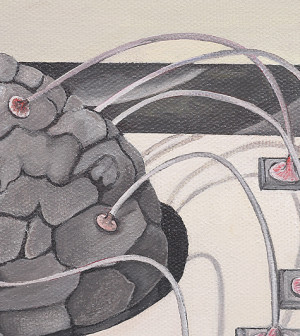- Navigating Your Midlife Crisis: Embracing New Possibilities
- City Raccoons Showing Signs of Domestication
- Mapping the Exposome: Science Broadens Focus to Environmental Disease Triggers
- One Week Less on Social Media Linked to Better Mental Health
- Your Brain Changes in Stages as You Age, Study Finds
- Some Suicide Victims Show No Typical Warning Signs, Study Finds
- ByHeart Formula Faces Lawsuits After Babies Sickened With Botulism
- Switch to Vegan Diet Could Cut Your Greenhouse Gas Emissions in Half
- Regular Bedtime Does Wonders for Blood Pressure
- Dining Alone Could Mean Worse Nutrition for Seniors
Flame Retardants Common in Dust at Child Care Centers: Study


Hazardous flame retardants are found indoors at U.S. child care centers, which means children at those facilities could be exposed to the chemicals, a new study reveals.
Researchers analyzed dust samples collected from 40 child care centers in urban, rural and agricultural areas of Monterey and Alameda counties in California. Flame-retardant chemicals were found in all the dust samples.
While flame retardants were detected in all of the dust samples, levels of the chemicals were generally low in air samples collected from the child care centers, the study authors noted in the report published online May 15 in the journal Chemosphere.
Of the 40 day care centers included in the study, 29 had furniture with foam and 17 had napping gear made out of foam. The centers with foam items had much higher levels of flame-retardant chemicals than those without foam, the investigators found.
“These findings underscore how widespread these materials are in indoor environments,” lead author Asa Bradman, associate director of the Center for Children’s Environmental Health Research at the University of California, Berkeley, said in a university news release.
“A growing body of research has found links between flame retardants and a range of human health effects, including neurodevelopmental delays in children. Children are more vulnerable to the health effects of environmental contaminants, so we should be particularly careful to reduce their exposure to harmful chemicals,” Bradman added.
The researchers noted that many infants and young children spend up to 50 hours a week in day care centers. However, they pointed out in the news release, this study is the first systematic review of flame retardants in such facilities.
More information
The U.S. Centers for Disease Control and Prevention has more about flame retardants.
Source: HealthDay
Copyright © 2025 HealthDay. All rights reserved.










